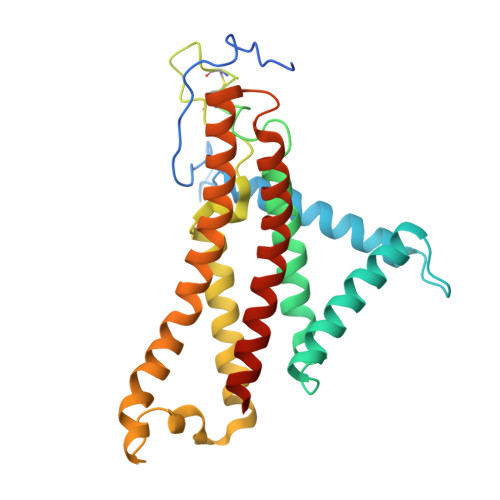Structure of ATP synthase from an early photosynthetic bacterium Chloroflexus aurantiacus.
Zhang, X., Wu, J., Min, Z., Wang, J., Hong, X., Pei, X., Rao, Z., Xu, X.(2025) Proc Natl Acad Sci U S A 122: e2425824122-e2425824122
- PubMed: 40131952
- DOI: https://doi.org/10.1073/pnas.2425824122
- Primary Citation of Related Structures:
9ITJ, 9ITK, 9ITL, 9ITM, 9ITN, 9ITO, 9ITP, 9ITQ, 9ITR, 9ITS, 9ITT, 9ITU, 9ITV, 9ITW, 9ITX, 9ITY, 9ITZ, 9IU0 - PubMed Abstract:
F-type ATP synthase (F 1 F O ) catalyzes proton motive force-driven ATP synthesis in mitochondria, chloroplasts, and bacteria. Different from the mitochondrial and bacterial enzymes, F 1 F O from photosynthetic organisms have evolved diverse structural and mechanistic details to adapt to the light-dependent reactions. Although complete structure of chloroplast F 1 F O has been reported, no high-resolution structure of an F 1 F O from photosynthetic bacteria has been available. Here, we report cryo-EM structures of an intact and functionally competent F 1 F O from Chloroflexus aurantiacus ( Ca F 1 F O ), a filamentous anoxygenic phototrophic bacterium from the earliest branch of photosynthetic organisms. The structures of Ca F 1 F O in its ADP-free and ADP-bound forms for three rotational states reveal a previously unrecognized architecture of ATP synthases. A pair of peripheral stalks connect to the Ca F 1 head through a dimer of ¦Ä-subunits, and associate with two membrane-embedded a-subunits that are asymmetrically positioned outside and clamp Ca F O 's c 10 -ring. The two a-subunits constitute two proton inlets on the periplasmic side and two proton outlets on the cytoplasmic side, endowing Ca F 1 F O with unique proton translocation pathways that allow more protons being translocated relative to single a-subunit F 1 F O . Our findings deepen understanding of the architecture and proton translocation mechanisms of F 1 F O synthases and suggest innovative strategies for modulating their activities by altering the number of a-subunit.
Organizational Affiliation:
Zhejiang Key Laboratory of Medical Epigenetics, Department of Biochemistry and Molecular Biology, School of Basic Medical Sciences, Hangzhou Normal University, Hangzhou 311121, China.


















